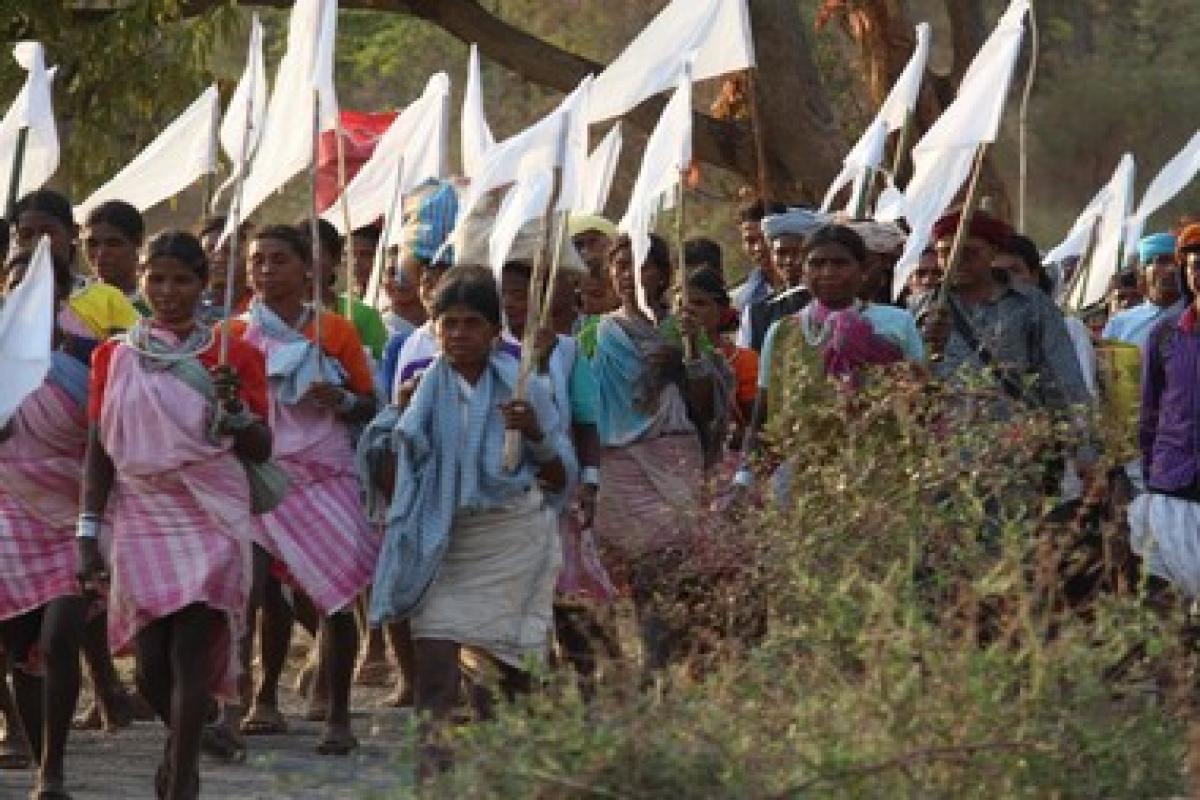
Customary Laws and Acts in Chhattisgarh and their welfare and developmental impact on residents of Chhattisgarh
The Panchayats (Extension to Scheduled Areas) Act, 1996
Part IX of the Constitution contains a large number of provisions relating to the definition and constitution of Panchayats, Gram Sabhas, their powers and functions, and elections. Article 243-M of the said chapter, however, provides that where Scheduled Areas are concerned, provisions of this Chapter will not apply unless a special law is enacted by Parliament making such exceptions and modifications as necessary. This provision is based on the understanding that with regard to Scheduled Areas, a special constitutional dispensation is in place under Article 244 read with the Fifth Schedule. Therefore governance mechanisms which may be appropriate for the rest of the country ought not to be applied to such areas without necessary changes in order to bring them in conformity with the constitutional design.
PESA makes it a duty of the State to ensure that any law enacted for the Scheduled Area on panchayats must give primacy to existing customary law and traditional mechanisms, and also give primacy to the community in the management of its community resources. It is generally agreed that these clauses encapsulate the essential ingredients of the approach of PESA for all law relating to panchayats and local self governance in Scheduled Areas.
Some of the key principles and features of the act are as follows:
- The Gram Sabha should be accorded prime place in the scheme, and is endowed with powers relating to management of natural resources and developmental projects;
- The intention is devolution of power to the Gram Sabhas, not delegation of power, and the Gram Sabhas should be able to function as institutions of local self governance. He also refers to the ‘Principle of Subsidiarity’, meaning that the panchayats at the higher level should not assume the powers and authority of any panchayats at the lower level or of the Gram Sabha.
- The three tier panchayats are the executive arms of the Gram Sabha, and therefore should not statutorily be allowed to overlook the authority of the Gram Sabha.
- The recommendations of the Gram Sabha or the Panchayats at the appropriate level shall be made mandatory prior to grant of prospecting license or mining lease for minor minerals in the Scheduled Areas.
- PESA requires that “planning and management of minor water bodies in the Scheduled Areas shall be entrusted to Panchayats at the appropriate level”.
- This provision is based on the understanding that at the level of the village, the local community should have the power to manage its local water resources and plan for their sustenance, sharing and development.
- In the interest of local self government, according to PESA, the State governments are required to empower “Panchayats at the appropriate level and the Gram Sabha” to regulate the sale and consumption of intoxicants, manage village markets, and control money-lending.
- The power to regulate the sale and distribution of liquor and other intoxicants in the State level statutes, is vested in the Gram Sabha.
The Scheduled Tribes and Other Traditional Forest Dwellers (Recognition of Forest Rights Act, 2006
The Scheduled Tribes and Other Traditional Forest Dwellers (Recognition of Forest Rights Act, 2006, commonly referred to as the Forest Right Act (FRA), is considered a pathbreaking legislation that acknowledges the historical injustice meted out to India’s forest dwellers, particularly tribals. The legislation was promulgated to “recognise and vest forest rights and occupation in forest land in forest dwelling” to tribals and other traditional forest dwellers “who have been residing in forests for generations but whose rights could not be recorded”.
The issue of forest rights in Chattishgarh can be interpreted from different perspectives depending on whether one is a forest dweller, forest official, environmentalist, economist or social activist. The issue is of crucial importance considering that forest landscapes cover over 44 % of the state and affect the livelihoods of millions of peoples.
Key features of the act are as follows:
- The FRA recognises and vests secure community tenure on ‘community forest resources’, which are defined as common forest land within the traditional or customary boundaries of the village or seasonal use of landscape in case of pastoral communities, including reserved forests, protected forests and protected areas such as sanctuaries and national parks to which the community had traditional access.
- .The Government of India reserves the right, regardless of the FCA provisions, to divert forest land for the following government-managed facilities like schools, dispensaries or hospitals, anganwadis and fair price (PDS) shops etc. However, such diversion for developing common infrastructural resources, which was not permissible earlier, will be allowed only if the forest land to be diverted is less than one hectare in each case and not more than 75 trees per hectare are required to be felled. Also, recommendation of the Gram Sabha is required to clear the project.
- The Government of India reserves the right to modify forest rights and resettle forest dwellers to create inviolate areas for wildlife conservation in critical wildlife habitats (national parks and sanctuaries) subject to the following conditions:
- The concerned agencies of the state government establish, in exercise of their powers under the Wild Life (Protection) Act, 1972, that the activities or presence of the forest dwellers can cause irreversible damage and threaten the existence of the animal species and their habitat.
- The state government concludes that other reasonable options, such as co-existence are not available.
- A resettlement or alternative package to provide a secure livelihood for the affected individuals and communities that fulfills their requirements under the relevant laws and policies has been prepared and communicated.
